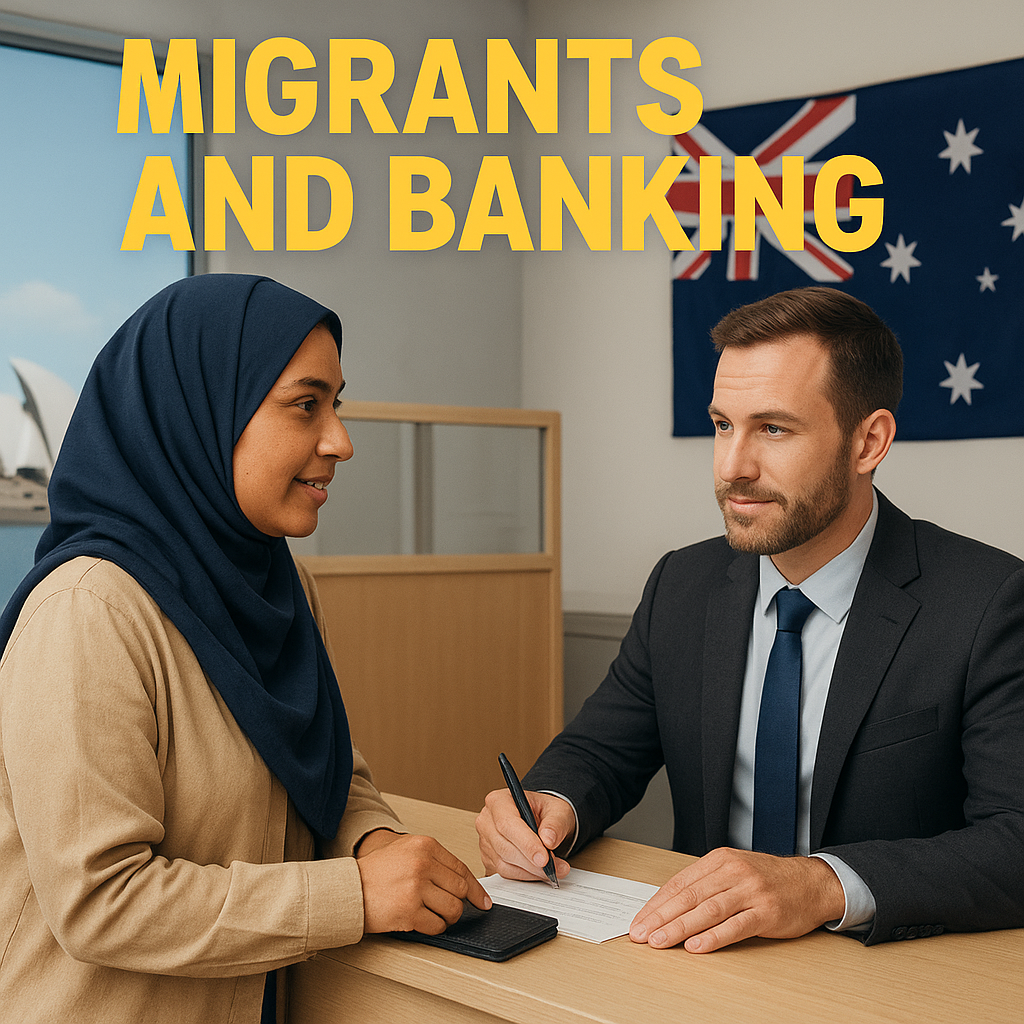Explore banking for migrants in Australia—learn account options, how to open your first bank account, and tips for managing your finances effectively.
Introduction
Over 90% of migrants in Australia stay with their first bank for years. Choosing the right banking option shapes your settlement experience, financial security, and ability to send money home. In this guide, we explore banking for migrants, from opening accounts to managing transfers, tailored for newcomers’ needs.
Understanding Banking for Migrants: Your First Steps
Opening a bank account is crucial for day-to-day living, receiving your salary, and renting a home. Most large banks—like Commonwealth Bank (CommBank), National Australia Bank (NAB), and ANZ—offer dedicated migrant bank accounts with simplified procedures. Many even allow you to start the process online before you arrive in Australia, saving valuable time.
You’ll need ID (like a passport and visa), proof of address, and, if applying before arrival, may need to visit a branch for final verification after landing. Migrant bank accounts often feature low or waived fees, digital banking, and access to multilingual support—a key for ease and comfort during your transition.
Banking Options for Newcomers: Features, Benefits & How to Decide
Australia’s banks and fintech firms have evolved to address the specific needs of new arrivals. Options now include:
- Basic Transaction Accounts: Essential for everyday use, allowing deposits, withdrawals, and bill payments.
- Online-Only Accounts: Ideal for digital-first migrants; quick to open and manage.
- Migrant-Focused Accounts: Many major banks offer accounts with low fees or special features (fee waivers for the first year, multilingual customer service, or tailored onboarding support).
- Remittance Services: Sending money overseas is made easier via in-app international money transfers and partnerships with remittance specialists.
Innovation in migrant banking Australia includes products that need minimal paperwork, take foreign credit histories into consideration, and even provide financial education workshops and multilingual digital tools.
When picking the best bank for immigrants, compare:
- Monthly account fees and fee waivers for migrants
- Availability of multilingual support and digital tools
- Accessibility of bank branches and ATMs near where you live/study
- Ease of sending money home or receiving international payments
Financial Essentials: Setting Up, Sending Money & Building Credit
How to Open a Bank Account in Australia as a Migrant
- Apply online with a leading bank (CommBank, NAB, ANZ, Westpac) before arrival or shortly after landing.
- Prepare the necessary documents: passport, visa, proof of address.
- Complete identity verification in-branch after arrival (usually within 20 days to keep your account active).
- Activate your account and set up online/mobile access for everyday use.
Transferring Money Internationally
Banks and fintech partners provide low-cost international transfers, making it simple to send money to family or business abroad. Compare rates, as some banks waive fees for transfers to their global partner branches; others partner with digital transfer firms for low rates and speed.
Loans and Credit for New Migrants
Most banks require permanent residency for personal or home loans, but select lenders may consider students or those on other visas if certain conditions are met. Building your credit early—by paying bills promptly and saving regularly—improves your financial options long-term. Community organizations also offer microloans to newcomers building their financial foundation.
Conclusion
Choosing the right migrant bank account and understanding your options is essential to settling smoothly in Australia. With tailored products, digital banking, and support, you can manage finances, send money home, and build your future. Compare your options—open a bank account as a new migrant, and take charge of your financial wellbeing.

